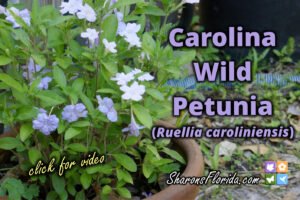
Ruellia caroliniensis
(Carolina Wild Petunia)
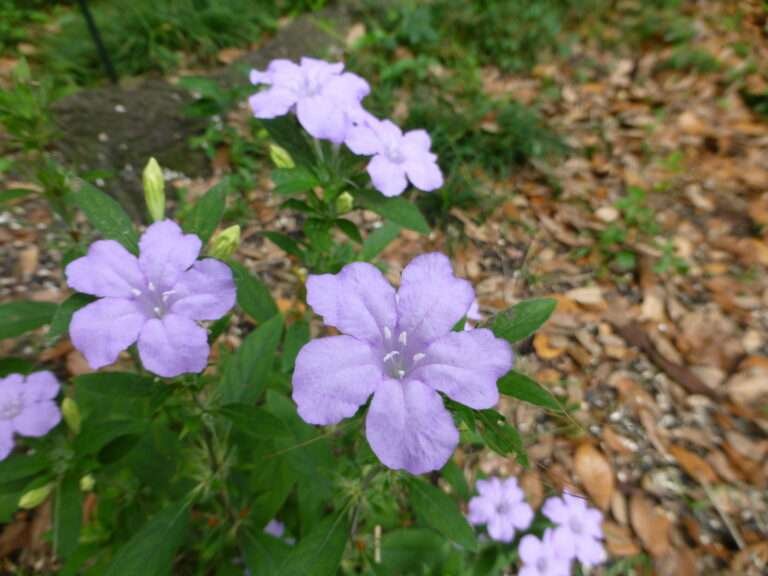
Common Name, Latin Name & Family
Its common name is Carolina wild petunia and wild petunia.
Its Latin name is Ruellia caroliniensis.
Carolina wild petunia is in the Acanthaceae, or acanthus, family.
Form
Carolina wild petunia is a perennial wildflower that grows to a height of about two feet although some literature says it grows much higher I have not found that to be the case.
It is a short clumping shaped wildflower and when blooming looks like a bouquet in the landscape.
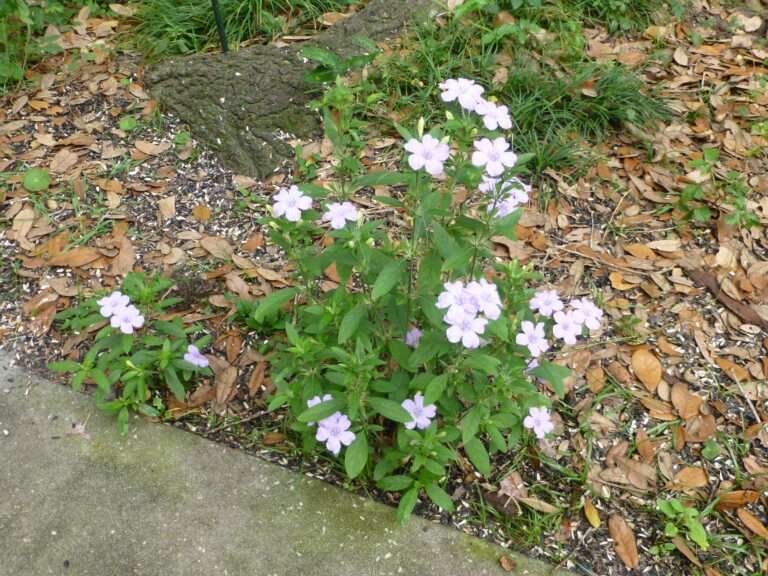
Leaves
Carolina wild petunia leaves are opposite, ovate to elliptic in shape, stalked, with entire margins.
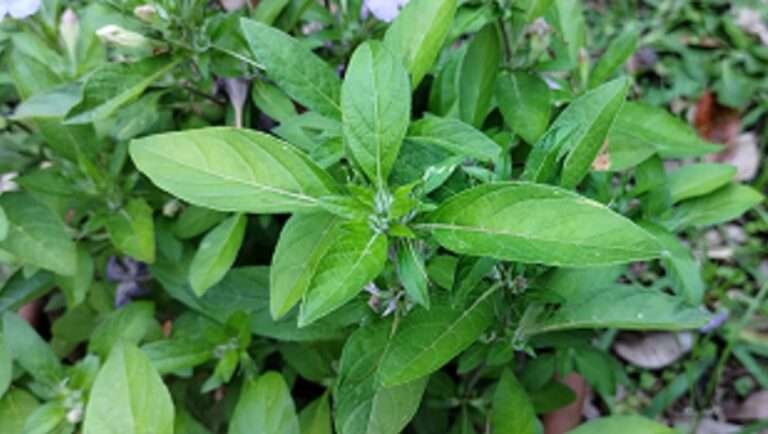
Flowers
The pale lavender, large petaled, blooms appear in the spring, summer and fall and are a favorite of butterflies and bees.
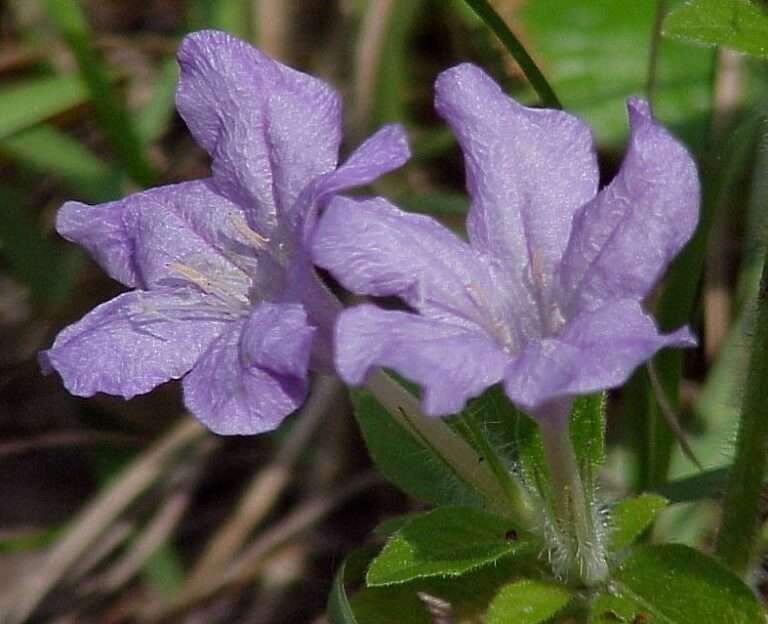
Habitat
Carolina wild petunia grows naturally in dry, open, forests, sandhills, pine flatwoods, and woodland clearings.
Native Range
In Florida it can be found naturally occurring throughout most of the state with the exception of only a few counties.
It is native to the following states: AL, AR, DC, DE, FL, GA, IL, IN, KY, LA, MD, MS, NC, NJ, OH, OK, PA, SC, TN, TX, VA, and WV.
Landscape Use
It grows in full sun to part shade with average moisture. However it does not like wet feet so don’t let it stay wet for too long.
It grows in poor soils where little else will grow. It will also do fine in store bought potting soil or a pine bark mix. It is not fussy about soil and grows in a wide variety from sandy to rich loam.
It is a good candidate for container gardening. I like to have one pot full of them and when I find random volunteers I add it to that container and get more and more flowers. The more plants you have the more blooms you will get.
Carolina wild petunia will benefit from an application of fertilizer. Use something focused on blooms rather than foliage and organic rather than synthetic. Avoid high nitrogen fertilizers and focus on an organic kelp meal or liquid as this will provide more blooms and nutrition for the plant. Many high nitrogen fertilizers will give your plants nitrogen overdose – even if it’s an organic product. The foliage will yellow, wilt, and the plant will eventually die if you keep applying that fertilizer. Less is more most of the time with fertilizers. I like a product called Alaska Morbloom. I use that most of the year and then once in a while apply composted chicken manure – either dry or as a tea.

Wildlife Uses
Bumblebees and butterflies use the flowers as a nectar source.
Propagation
Carolina wild petunia transplants well and can also be grown from seed although the literature says that the germination rate is usually very low.
I have not grown it from seed, but am a little doubtful about the mainstream comments about it being a low germination seed because I find volunteers all over my garden and I have only one container of wild petunia at the moment. The volunteers are coming from seed, from that plant, and they are popping up everywhere.
My favorite way of propagation is to locate the volunteers and transplant them.
Handle with care because the stem is weak where it meets the roots. If you do accidentally break off the upper portion of the plant don’t be alarmed because it will grow back rather quickly just be sure to plant it at the right depth.
Transplanting volunteers is a great way to acquire new plants so learn to identify the immature versions of what you’re looking for and you may be surprised at how many you are able to locate. Moving them to one area, or in a container, also helps with concentrating the plants in one area for a better visual impact.
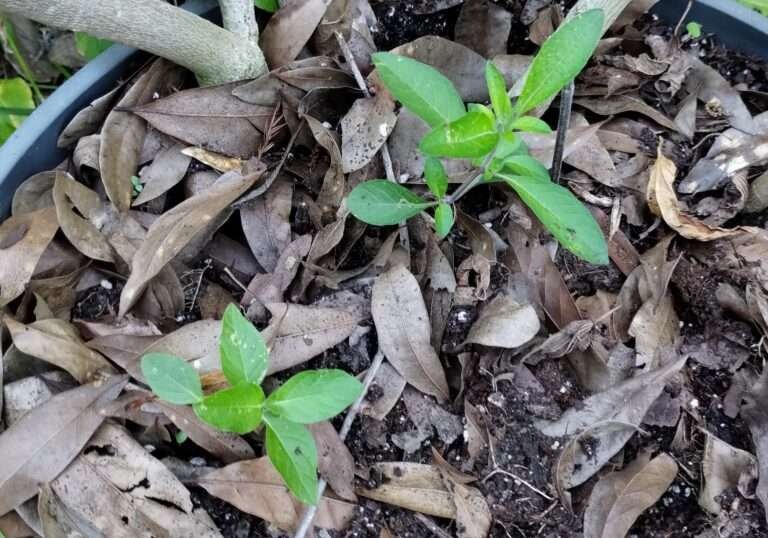
The Carolina wild petunia is native to the eastern United States. It is found in just about every Florida county and west to Texas and north to Indiana.
Carolina wild petunia is a perennial wildflower that grows to a height of about two feet although some literature says it grows much higher I have not found that to be the case.
I have photo slides in the video with links to help you locate native plants with the Florida Association of Native Nurseries, and a link to the Florida Invasive Plant Council if you would like to learn about the non-native invasive Mexican petunia.
